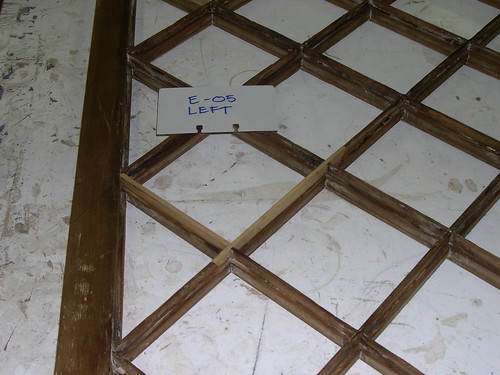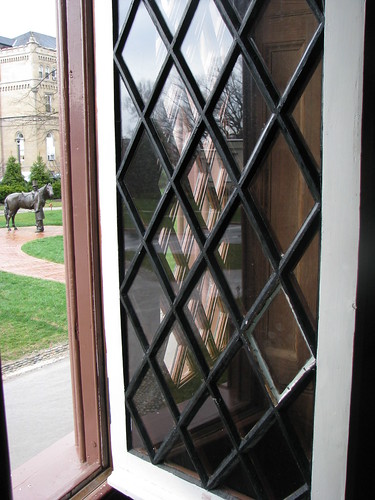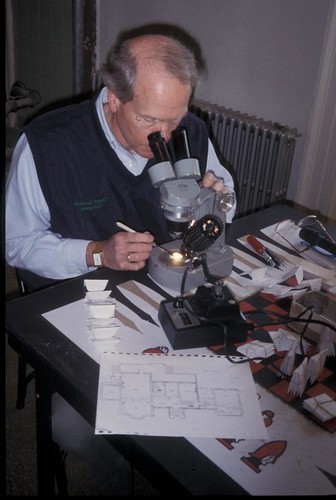By Jeffrey Larry
Typically when replacing a piece of glass in a wooden window frame, the glass is placed into the frame on a bedding of window glazing putty and held in place with some type of pin. A putty knife is then used to install glazing putty at an angle between the glass and the edge of the muntin. The standard modern glazing putty is typically a product found in a hardware store that comes in a can or caulk-like tube. There are numerous blogs online that discuss the methods and ease of application of these products. (www.historichomeworks.com)
During the exterior restoration of President Lincoln’s Cottage in 2004-2005 all of the glass was removed from every window frame. The frames were restored or reconstructed and the glass was reinstalled using a process similar to the one described above. The main difference was the use of a traditional glazing putty. A traditional glazing putty is simply made of linseed oil & a variety of chalks (calcium carbonate). The modern putties are made with different oils and ingredients including known carcinogens Anthophyllite and Crystalline Silica.
A traditional glazing putty is slow drying but will remain flexible to allow for wood movement from temperature fluctuations. This means up to a four week wait time before applying an oil-based primer and top coat. If a linseed oil paint is used, it can be applied immediately after the glazing is installed. A modern glazing putty has additives that speed the drying process which is advantageous if you are looking to paint the glazing quickly. The problem in the long term is that the glazing dries very hard and may eventually crack. Traditional linseed oil glazing is not a product typically found at a local hardware or big box store but it can be found at a few companies online. The glazing used at the Cottage was from Viking Sales, which offers a Swedish brand linseed oil glazing putty along with other natural painting and finishing products.
Recently a small diamond pane on the north elevation of the Cottage was cracked and required replacement. Upon removing the glass it was a surprise to find that the glazing itself had been tinted black before being re-installed in the 2004-2005 restoration. A review of the Frank Welsh 2002 paint analysis confirmed that the original glazing had been tinted black.
Frank Welsh, pictured.
The choice to use the traditional linseed oil glazing at President Lincoln’s Cottage over the modern glazing was an obvious one. The President Lincoln’s Cottage Visitor Education Center recently received LEED Gold Certification for its sustainable restoration, part of the National Trust for Historic Preservation’s broader initiatives on sustainability. Although the Cottage did not go through the process of LEED certification, the staff is committed to selecting organic, all natural products for both buildings whenever possible, especially when they are historically appropriate and preferable from a preservation perspective. But it may not be the right choice for everyone. Check back to this blog in a few days when the process of preparing, tinting and applying the traditional glazing is discussed and weighed against the easier to find and use, less expensive, modern glazing.



